Hidden Impact: What You Need to Know for the Next Disaster: a Practical Mental Health Guide for Clinicians : A Practical Mental Health Guide for Clinicians, by Frederick J. Stoddard, Jr., Craig L. Katz and Joseph P. Merlino, Published by Jones and Bartlett Publishers, Boston, 2010, 249 pages
: A Practical Mental Health Guide for Clinicians, by Frederick J. Stoddard, Jr., Craig L. Katz and Joseph P. Merlino, Published by Jones and Bartlett Publishers, Boston, 2010, 249 pages
Review originally published in the Journal of the American Academy of Psychoanalysis and Dynamic Psychiatry
Most clinicians who have expertise in mental health aspects of disaster developed their skills in this area after they found themselves seeing patients following some tragic event. It is true that well trained clinicians know about acute stress, loss, grief and PTSD since these conditions come up in many forms with many patients. However, the application of their clinical skills in the midst and in the aftermath of disaster is a whole different ballgame. Having co-taught a course in disaster psychiatry for several years at the annual meeting of the American Psychiatric Association, I heard this story many times as colleagues joined us for the course after experiencing a disaster in their area.
There are many courses seminars, journal articles and books which will inform you in great depth about the essential topics in disaster mental health, many of them written and edited by the editors and contributors of Hidden Impact. The book is originated from the Group for the Advancement of Psychiatry (GAP) where the authors ore members of the Committee on Disasters and Terrorism . GAP has a tradition of identifying important areas of mental health and supporting publications in these areas. In my opinion this book fits the bill as the first book on this subject you should read or if you were only reading one book this is the one to read. It is the book that you will throw in your suitcase if you find yourself traveling to a site to render care in the aftermath of a disaster
In 250 pages this is as comprehensive a course of study on this subject as I have ever seen in a book this size. It is well written, interesting and quite practical. Each chapter starts with a vignette, which either centers on victims of a disaster or on the caretakers faced with the dilemma of dealing with the aftermath of such an event. The book is filled with practical information such as a comprehensive check list (and I do mean comprehensive) of what to take with you if you go into an area to render care.( ie, pack your own power, take local maps, support socks, brimmed hat, iodine for water decontamination etc. There are clinical tables and charts to be sure you don’t miss the basics such as what to expect during the impact phase (first 48 hours) acute phase (1-8 weeks), post acute phase (2 months and beyond). There are many clinical screening tables such as the one for PTSD in children. There is a discussion and review of pharmacology in disaster situations. There are chapters on the use of telepsychiatry, liability, ethics, staff support as well as some of the latest thinking on resiliency. There is also a list of useful resources including websites
You should not be surprised to find that if you are working in a disaster situation, you will be interacting with the media as well with community leaders who have the responsibility to make reports to the media . In this regard the topic of risk communication and “how to do it“ is well covered in a succinct chapter. By the way, your clinical skills can also be useful to members of the working press who are often traumatized by working in a disaster environment. This latter clinical issue is discussed in the chapter about understanding and helping first responders. It is clear that the we need to apply our knowledge of the psychological impact of disasters not only to the primary victims but also to the secondary victims who come to the aid of others. That of course includes ourselves. Perhaps one of the most valuable tables offered in the book is a table from SAMHSA (Substance Abuse and Mental Health Services Administration) about managing and preventing stress, which includes the signs that you may need stress management assistance and ways to help manage your own stress.
As an added bonus the book is approved for AMA PRA Category 1 CME credits with instructions for getting Continuing Medical Education Credits from the Medical Society of The State of New York.
Addendum: This review would not be complete without mentioning a recent book which should be a companion piece to this one. It is edited also by two of the same authors Fredderick J Stoddard and Craig Katz along with Anand Pandya and includes chapters by Merlino and many others on similar and related topics. It is titled Disaster Psychiatry: Readiness, Evaluation and Treatment. Published by the American Psychiatric Press, 2011.
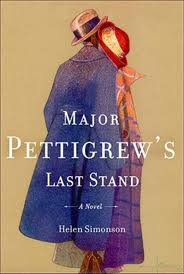 When you are part of book discussion group, you often find yourself reading books that you might not have chosen on your own. A book about a stuffy British retired Major would not normally be my cup of tea and I felt that way for the first few chapters of the book. However the issues, which the characters were dealing with, began to stimulate my thinking. The Major was obsessed whether he would get the other half of a pair of old shooting pistols with a meaningful family history that had been in the possession of his recently deceased brother since he always felt that they both should have bequeathed to himself by their father. I could not help but think of all the stories I have heard about hurt feelings that have revolved around inheritances and the life long bitterness that sometimes follows such circumstances. Also quite thought provoking was the main theme of this novel which was romance that the Major and a similarly “older” Pakistanian women were developing. .It confronted the issue of how family, friends so often try to define what the boundaries of a relationship should be , especially when there might be differences of race, religion and culture. The author really looks at what the obstacles could be to joining a country club as well as the obstacles for two good people joining together in a relationship. While a story of love occurring at the tail end of the age spectrum will not come as a surprise to senior citizens, their children’s generation can find it hard to believe This was one of the reasons why the way the main character had to consider had to be thoughtful of how he was now viewing his own son. In the end I decided that I did like this British cup of tea and suggest it can be savored for some good reading.
When you are part of book discussion group, you often find yourself reading books that you might not have chosen on your own. A book about a stuffy British retired Major would not normally be my cup of tea and I felt that way for the first few chapters of the book. However the issues, which the characters were dealing with, began to stimulate my thinking. The Major was obsessed whether he would get the other half of a pair of old shooting pistols with a meaningful family history that had been in the possession of his recently deceased brother since he always felt that they both should have bequeathed to himself by their father. I could not help but think of all the stories I have heard about hurt feelings that have revolved around inheritances and the life long bitterness that sometimes follows such circumstances. Also quite thought provoking was the main theme of this novel which was romance that the Major and a similarly “older” Pakistanian women were developing. .It confronted the issue of how family, friends so often try to define what the boundaries of a relationship should be , especially when there might be differences of race, religion and culture. The author really looks at what the obstacles could be to joining a country club as well as the obstacles for two good people joining together in a relationship. While a story of love occurring at the tail end of the age spectrum will not come as a surprise to senior citizens, their children’s generation can find it hard to believe This was one of the reasons why the way the main character had to consider had to be thoughtful of how he was now viewing his own son. In the end I decided that I did like this British cup of tea and suggest it can be savored for some good reading.
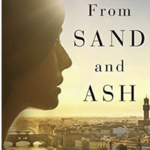
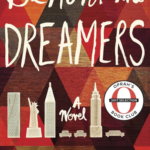
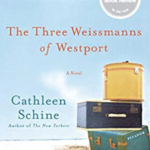
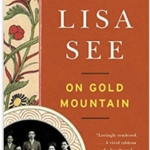
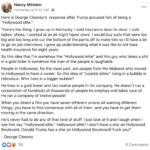
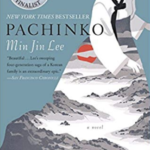
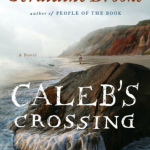
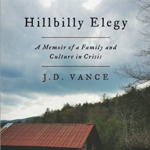

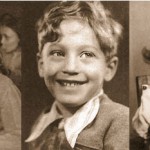



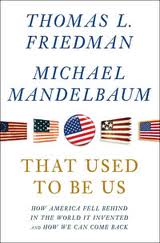 If you are to read one book about the contemporary US socio-political and economic condition,
If you are to read one book about the contemporary US socio-political and economic condition, 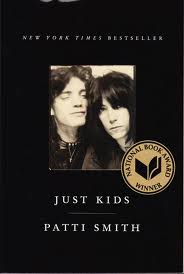 If you don’t know much about Patti Smith and you look her up you will see that she is a very accomplished poet, visual artist, song writer and performer. Her music is of the punk rock variety. She even co-wrote a song with Bruce Springsteen that made it to #13 and she has received all kinds of recognition for her body of work including being inducted into the Rock and Roll Hall of Fame. This book touches upon some of the many things that she has done but it is really a story of her relationship with a man who wasn’t her husband or the father of her children and wasn’t even a musician. The man however, was an artist and although I don’t believe she used the term about him, it is fair to say that he was her “soul mate.” The man is Robert Mapplethorpe and if by chance you don’t know much about him and look him up you will see that he was a preeminent photographer known best for mostly black and white photos, many Polaroid, and many of flowers and nude men . His photos were frequently known for their homoerotism. He also took many portraits including photos of Patti Smith and did the cover for many of her albums.
If you don’t know much about Patti Smith and you look her up you will see that she is a very accomplished poet, visual artist, song writer and performer. Her music is of the punk rock variety. She even co-wrote a song with Bruce Springsteen that made it to #13 and she has received all kinds of recognition for her body of work including being inducted into the Rock and Roll Hall of Fame. This book touches upon some of the many things that she has done but it is really a story of her relationship with a man who wasn’t her husband or the father of her children and wasn’t even a musician. The man however, was an artist and although I don’t believe she used the term about him, it is fair to say that he was her “soul mate.” The man is Robert Mapplethorpe and if by chance you don’t know much about him and look him up you will see that he was a preeminent photographer known best for mostly black and white photos, many Polaroid, and many of flowers and nude men . His photos were frequently known for their homoerotism. He also took many portraits including photos of Patti Smith and did the cover for many of her albums.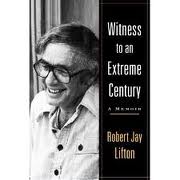 I had always wanted to learn more about the interesting work of psychiatrist Robert J. Lipton that I had heard about, but I never got around to reading his various books and other writings. This is the reason that I was pleased to embark upon reading this recent memoir. The author not only reviews his four main projects but he shares his recollections and feelings about the many people he has met along the way of his fascinating life’s work.
I had always wanted to learn more about the interesting work of psychiatrist Robert J. Lipton that I had heard about, but I never got around to reading his various books and other writings. This is the reason that I was pleased to embark upon reading this recent memoir. The author not only reviews his four main projects but he shares his recollections and feelings about the many people he has met along the way of his fascinating life’s work.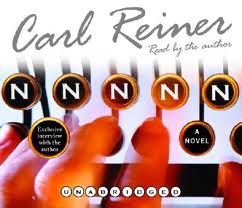 If you are any kind of a fan of Carl Reiner, you would have loved to have been a fly on the wall as he was developing his ideas for the 2000 Year Old Man with Mel Brooks or writing the Dick Van Dyke Show or the Show of Show of Shows with Sid Caesar or directing the Jerk or any of the numerous comedic works that this now almost 90 year man has created in his career. The format of this 2006 novel by Reiner gives the reader the opportunity to get a glimpse into his genius and his sense of humor. You view most of the book through the eyes of Nat Noland who is a novelist struggling to write his 5th novel appropriately titled
If you are any kind of a fan of Carl Reiner, you would have loved to have been a fly on the wall as he was developing his ideas for the 2000 Year Old Man with Mel Brooks or writing the Dick Van Dyke Show or the Show of Show of Shows with Sid Caesar or directing the Jerk or any of the numerous comedic works that this now almost 90 year man has created in his career. The format of this 2006 novel by Reiner gives the reader the opportunity to get a glimpse into his genius and his sense of humor. You view most of the book through the eyes of Nat Noland who is a novelist struggling to write his 5th novel appropriately titled 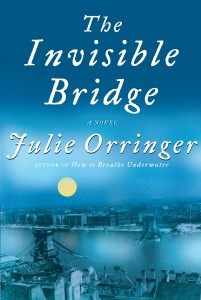 If
If 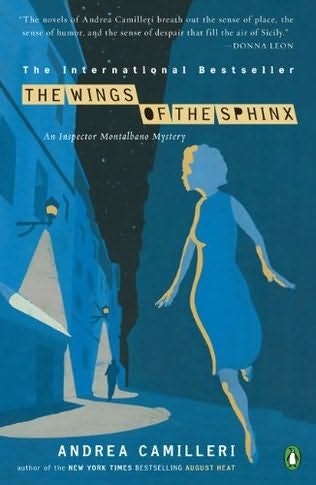
 This book is a fictional story narrated in the first person by someone who spends most of his life in a setting that most of us would not expect to identify with or relate to. That is growing up on the grounds of a hospital in Eithopia with one’s identical twin and loving adoptive Indian parents who are physicians along with the dedicated servant staff including the daughter of one them who is your age. You only know that your biological mother was a nun who died in childbirth and your biological father was a brilliant surgeon at the hospital who fled the country after an abortive effort of crushing the skull of your identical twin in order to try to extract him in a stalled delivery prior to you and your brother ultimately being saved through a Caesarian section performed by your soon to be adoptive father who was internist. Shortly thereafter your adoptive fathers would marry your adoptive mother who was the Ob-Gyn physician at the hospital who happened to be out of the country at the time of the tragic circumstances of the beginning of you and your brother’s life. As unique as all these circumstances seem to be, the subsequent issues in the life of the narrator while unusual are things that do happen in the course of human events and become powerful determinants of one’s life story. Despite being identical twins, the narrator’s brother seems to be on the “autism spectrum”, talking at a late age and usually saying very little, having minimal capacity for experiencing and expressing interpersonal emotions, although being objective to the point of ultimately developing an interest and a single minded obsession in women’s fistulas which leads him to wide recognition for his knowledge and advocacy in this arena . His directness as a young man leads him to a sexual experience with the daughter of the household servant which sets off a crescendo of events that go on through a lifetime of the characters in this book. As is so often the case of lives and events, each intersection makes a change which will be so important in another significant event which will change another one. One misunderstanding or missed opportunity has set up a future event, which will forever change one’s life. Because the author has chosen to follow his characters for significant portions of their life cycle we come to know them in great depth so we empathize with most of them in a very meaningful way. We do pay a price for this depth of knowledge and understanding of the characters as the author has intertwined his narrative with endless detail about external events of climate, vegetation and seemingly unrelated incidental thoughts of the characters. I had to fight my obsessive style of not skipping sentences or paragraphs in a book as I usually deplore the style, which skims ahead for dialog or events in a wordy book although at times I lost this battle. The final reward for reading this book is an insight into one family and a glimpse of life in Ethiopia during the regime of Halle Sal isse as well as a little bit of the feel of the revolution which disposed him . The author being a physician also writes in great detail (sometimes more than you need) about the medical issues of the people who come to the hospital and as well those of some of the characters whom you have come to care bout. He also blends in some ethical dilemmas which not only challenged the characters but will most likely fascinate the reader. In the end the reader has taken a meaningful journey with the narrator and the people close to him and you cannot help but feel you are the richer for it.
This book is a fictional story narrated in the first person by someone who spends most of his life in a setting that most of us would not expect to identify with or relate to. That is growing up on the grounds of a hospital in Eithopia with one’s identical twin and loving adoptive Indian parents who are physicians along with the dedicated servant staff including the daughter of one them who is your age. You only know that your biological mother was a nun who died in childbirth and your biological father was a brilliant surgeon at the hospital who fled the country after an abortive effort of crushing the skull of your identical twin in order to try to extract him in a stalled delivery prior to you and your brother ultimately being saved through a Caesarian section performed by your soon to be adoptive father who was internist. Shortly thereafter your adoptive fathers would marry your adoptive mother who was the Ob-Gyn physician at the hospital who happened to be out of the country at the time of the tragic circumstances of the beginning of you and your brother’s life. As unique as all these circumstances seem to be, the subsequent issues in the life of the narrator while unusual are things that do happen in the course of human events and become powerful determinants of one’s life story. Despite being identical twins, the narrator’s brother seems to be on the “autism spectrum”, talking at a late age and usually saying very little, having minimal capacity for experiencing and expressing interpersonal emotions, although being objective to the point of ultimately developing an interest and a single minded obsession in women’s fistulas which leads him to wide recognition for his knowledge and advocacy in this arena . His directness as a young man leads him to a sexual experience with the daughter of the household servant which sets off a crescendo of events that go on through a lifetime of the characters in this book. As is so often the case of lives and events, each intersection makes a change which will be so important in another significant event which will change another one. One misunderstanding or missed opportunity has set up a future event, which will forever change one’s life. Because the author has chosen to follow his characters for significant portions of their life cycle we come to know them in great depth so we empathize with most of them in a very meaningful way. We do pay a price for this depth of knowledge and understanding of the characters as the author has intertwined his narrative with endless detail about external events of climate, vegetation and seemingly unrelated incidental thoughts of the characters. I had to fight my obsessive style of not skipping sentences or paragraphs in a book as I usually deplore the style, which skims ahead for dialog or events in a wordy book although at times I lost this battle. The final reward for reading this book is an insight into one family and a glimpse of life in Ethiopia during the regime of Halle Sal isse as well as a little bit of the feel of the revolution which disposed him . The author being a physician also writes in great detail (sometimes more than you need) about the medical issues of the people who come to the hospital and as well those of some of the characters whom you have come to care bout. He also blends in some ethical dilemmas which not only challenged the characters but will most likely fascinate the reader. In the end the reader has taken a meaningful journey with the narrator and the people close to him and you cannot help but feel you are the richer for it. On the same day as I started writing this review, I heard a report on NPR of a group of Saudi women who are protesting the law in their country that women can’t drive a car and must be driven around by men or take a taxi. The subjugation of women in Saudi Arabia and other Moslem countries was the underlying theme of this novel
On the same day as I started writing this review, I heard a report on NPR of a group of Saudi women who are protesting the law in their country that women can’t drive a car and must be driven around by men or take a taxi. The subjugation of women in Saudi Arabia and other Moslem countries was the underlying theme of this novel